Trending
Opinion: How will Project 2025 impact game developers?
The Heritage Foundation's manifesto for the possible next administration could do great harm to many, including large portions of the game development community.

Featured Blog | This community-written post highlights the best of what the game industry has to offer. Read more like it on the Game Developer Blogs or learn how to Submit Your Own Blog Post
Dead by Daylight is the biggest multiplayer horror game on the market today, but does this game hold up design and monetization-wise in today's market?
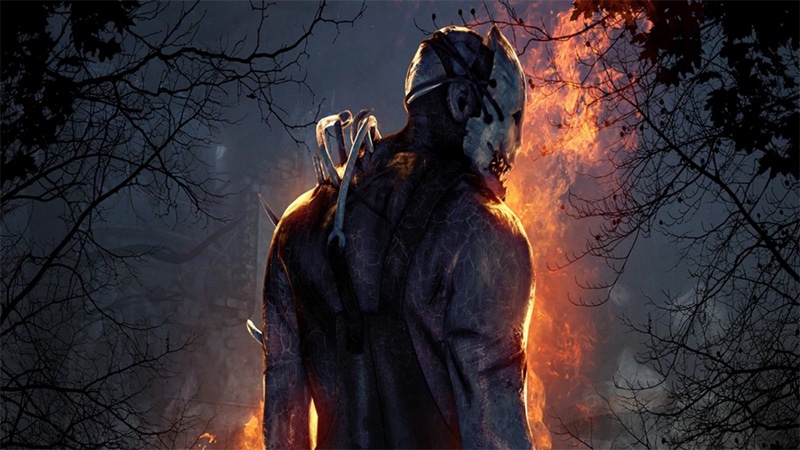
It’s taken me quite a while to finally load up Dead by Daylight, one reason was that I was playing Back 4 Blood, and another was the nightmares I heard of its toxic community. But with some added time and just ignoring all chat, I decided to jump in and see what one of the more successful takes on multiplayer horror can deliver. DBD stands out as a one-of-a-kind experience…but how much will that horror cost you?
The basic concept of DBD’s gameplay is asymmetrical multiplayer. Two teams: four survivors and one killer are set loose on a procedurally altered map. As the survivors, you need to repair five generators, escape through either the exit door or hatch, and try not to get killed. As the killer, your job is to hunt down the survivors, sacrifice them enough times on hooks to finally kill them, and stop them from escaping.
Since the game’s original release in 2016, the gameplay has evolved beyond the original survivors and killers. There are now 32 pieces of DLC, multiple collaborations between other games and iconic franchises, a battle pass system, and a store (that I’ll talk about further down).
What separates DBD from the other multiplayer horror games, including at the time its closest competitor: Friday the 13th The game, is how much mileage they have gotten out of two basic gameplay loops working together. What both sides are doing in each match doesn’t change on your first run or your 500th, but how you play does.
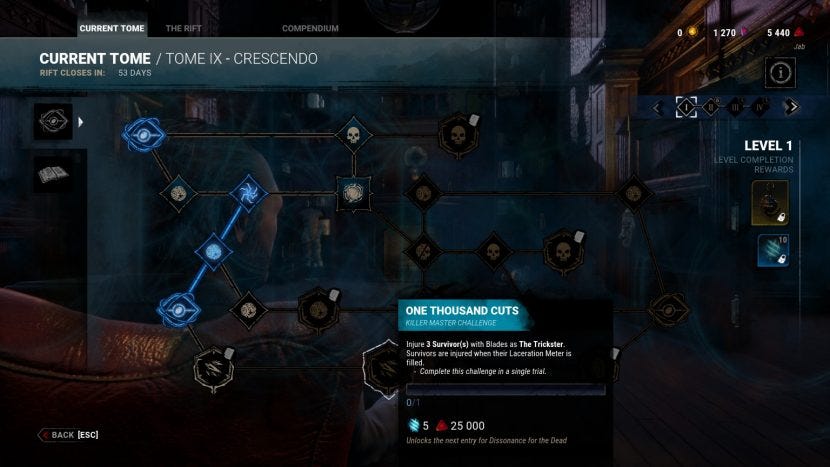
In terms of progression and secondary systems, DBD has come a long way
As a survivor, you need to not only get good at performing skill checks, but also how you move around the map, how you avoid the killer, and what do you do when the killer finds you. Each killer has the same basic abilities but also has a unique power. In a way, the different killers remind me of the champions of a MOBA — requiring the player to almost relearn how to play when they switch to a different one.
I recently played Back 4 Blood and I commented in my review about how progression in games like this has changed with the introduction of live service design. Dead by Daylight is now over 5 years old, and monetization has evolved, and that can be seen with the extensive progression and monetization systems.
From the outside, it is easy to assume that DBD is much like the original Left 4 Deads in terms of progression being fixed, but the game leans more into long-form progression. How it works is that every survivor and killer comes with three exclusive “perks.” These perks greatly vary in terms of what they offer — one survivor could get free healing without med kits, someone else could get the ability to get off a hook for free. For the killers, they could get the ability to see survivors further away, stop generators from being activated for some time, and much more. There are also generalized perks and each perk can also be found at different rarities, with the higher rarities having better stats.
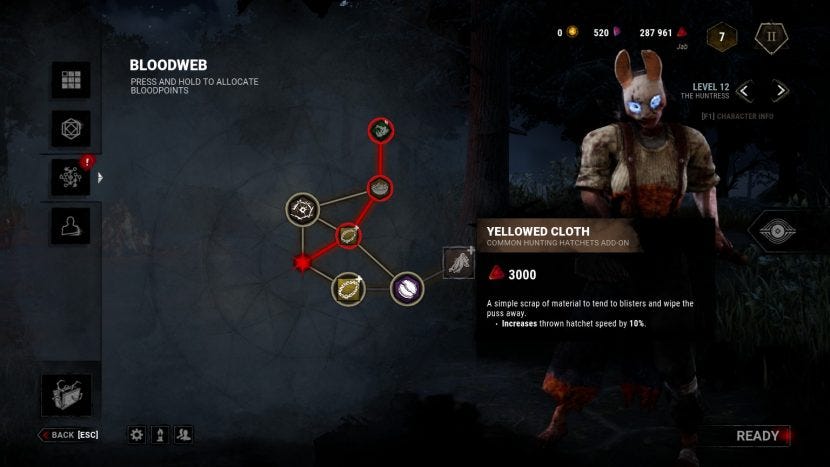
the bloodweb system is just a giant lootbox that dictates progression
To get these perks, players have to spend “blood points” at the “bloodweb.” Blood points are DBD’s version of universal experience points. The game randomly generates a bloodweb for each character level that will have different rewards. You could immediately get a rarer version of a perk you like, or you could go many levels before you see it. All rewards unlocked on the bloodweb are fixed to that character.
Besides equipping perks, you can also equip addons, items, and offerings before each match. Addons for killers and for survivor items enhance an aspect of their abilities or items and are specific to their respective attachments. Items for survivors allow them to do something better or make things easier during a play. Both groups can use offerings to change the upcoming match in a way that makes it easier for their side. However, there are several catches to this system. Any add-ons or offerings used during a match are consumed after it is over; requiring you to hopefully find more of them on your bloodweb. Items have a limited charge and once they’re done, the item is destroyed.
For both killers and survivors, if you level up your respective character high enough, you then unlock their perks to possibly show up on other characters’ bloodwebs and eventually gain the ability to equip up to four different perks. The idea is that high-level play is all about mixing and matching different perks to best suit your skill and the abilities of the character you play as. This is a great option for long-term play and rewarding people for playing multiple characters, but it also brings into question the monetization of the game.
Dead by Daylight is all about horror, and the scariest one of all is the horror of capitalism. Since the game has been released, the developers have adopted many of the monetization and design systems that have been seen in mobile and free-to-play design, so let’s go down the list of elements:
It still requires a retail purchase
The game has daily quests to earn additional blood points
There are seasonal challenges complete with a battle pass purchase for more rewards
An in-game shop to buy characters, perks, and tons of cosmetics
On top of blood points, there are two other currencies including a premium one that is used in the shop
DLC purchases of new chapters of content
A recent controversy of the developer getting into NFTs for their latest chapter
The DLC model is the one that is of the most interest to potential consumers. The different DLCs are sold and structured as “chapters” of the game. Each chapter can include any combination of the following, a new map, a new survivor with exclusive perks, a new killer with exclusive perks, and cosmetics for both. Maps, due to the competitive nature of the game, are always free and integrated into everyone’s copy of the game.
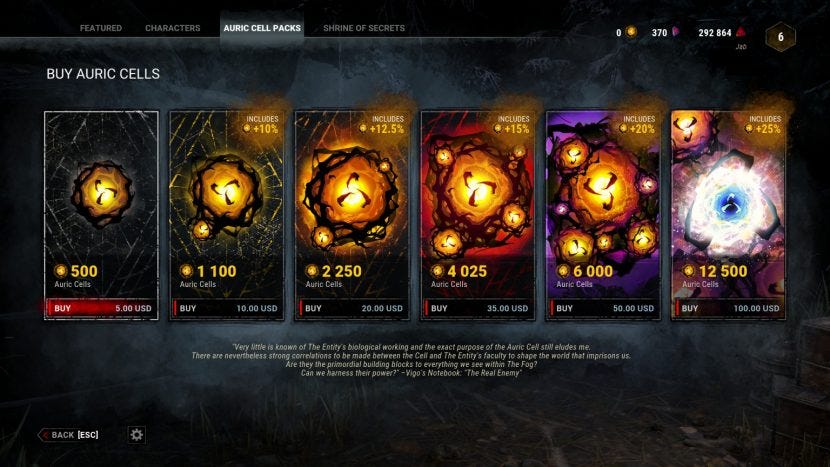
Despite being a retail game, that hasn’t stopped multiple forms of monetization being introduced
You can “earn” characters and killers for free using the in-game currency, but it’s that same “free” that got For Honor into trouble. Yes, over time you can earn the currency, but this could take weeks or months of playing the game as opposed to just spending money right there. Due to that design, DBD does lean into the pay-to-win side of monetization, but there’s more.
As I said, level up characters enough and you can start to get their perks transferable to other characters. Because of the competitive nature of the game, there is an extensive metagame in terms of what perks are the best, what characters and killers should you play, and so on. For players who stay with it, you’re going to hit that point as a survivor or a killer where those perks, add-ons, and items really matter. This is also where the toxic behavior and nature of the community comes in, with both sides accusing the other of “cheating” or “playing toxic” based on what they bring into a match, how they play, etc. In terms of the meta, I’m not going to touch that with a long-range huntress ax throw.
What I do know is that the more you spend in DBD, the more advantages you have as opposed to players who don’t. While blood points can’t be purchased, more characters mean a greater pool of perks to play around with. Battle pass challenges can be character/killer specific, and of course, you can spend money to get an upgraded battle pass for more rewards.
As for the playable characters themselves, DBD suffers from the same problem that any long-tail character-based game has over time — later stuff is just all-around better/cooler than the original. Newer killers come with more game-changing abilities than the originals, such as Nemesis from Resident Evil who spawns with his own zombie squad that can help you during a match. This is a problem with no real answer to it, as it’s natural for newer stuff to get more done to it as developers become more confident in their designs and try to make them more appealing to purchase. Trying to change any of the game systems now would completely break the game for everyone involved, and why we often don’t see those changes in live service games.
With DBD, while the concept and general gameplay are great, as a live service game today and trying to play it, I have some major problems. It does not seem that well built for the new player’s experience. It was hard to find matches as both the killer and the survivors. The game also suffers from onboarding on both groups. As with any live service game, the rules, strategies, and general methodology of playing have changed…none of which is mentioned at all by the game’s basic tutorials. I have no idea what the various status ailments do, the structure of playing the game, what the different killers do, etc. I learned more about the game watching youtubers than I did from the tutorial. The game’s manual is a “blink and you’ll miss it” on the tutorial page, and even then, it’s pretty nondescript in terms of talking in detail about the game. The entire tutorial should have been given a facelift by now, especially with the new survivor perks and killer powers.
Speaking of killer powers, there does not seem to be a way to test new killers out with the exception of private games, and that’s if you already own them, or any real guidance on how to use them. The game is clearly designed around long-term progression with the bloodweb, leveling, etc., but the short term doesn’t feel that motivating. Because the bloodweb is about random unlocks, it’s very much a “loot box” style of progression as opposed to making meaningful choices. Despite all the different mobile and free-to-play elements in DBD, the game doesn’t do a good job in my opinion on moving people through the loops and systems compared to some of the mobile games I’ve played. The developers went with the “learn as you go” style of onboarding which doesn’t work when “learn as you go” means “haphazardly spend all your blood points.” There are plenty of perks that I don’t understand what they do or why I should invest in getting them.
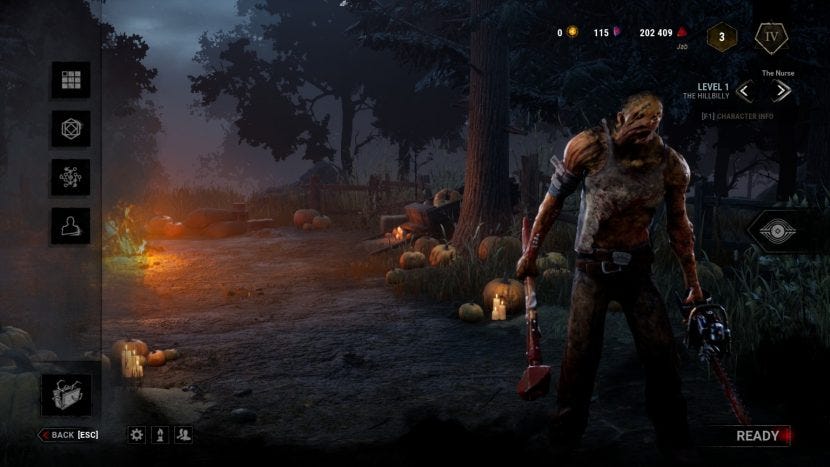
The different killers are varied, but good luck testing them out without spending a lot of money
As one other point, I have to say I’m not a fan of a game that purposely makes the UI and playability worse as a form of competition. Playing as a killer, the field of view is locked and it’s hard to make things out. I can barely hear where survivors are, even raising my volume louder than any other game, and that’s not counting the perks that let them mask their footsteps.
From the new player’s experience to the “player on a budget” experience, DBD is clearly designed to push its monetization and DLC above all else. I’m surprised the game doesn’t do the “weekly rotation” that MOBAs do that allows players to try out a paid champion for free, but only for a limited time. Of the four starting killers, the only one I enjoyed was Huntress and I would have liked to have seen what the other ones can do. I’m not a fan of the bloodweb system and how it’s just a lootbox for every. single. character. you want to play. I feel that having a smaller experience pool but making it character/killer specific for more meaningful choices would have been better. I’m also surprised that for a game with such a competitive focus that there isn’t a mode to play with no perks, add-ons, or items.
Dead By Daylight’s problems are the player’s paradox that I’ve seen in other competitive games. You have new players who are going to get put through the gauntlet of trying to learn and enjoy the game; many of them going to quit out of frustration. Leaving the high-level players just fighting and arguing with each other with very little reason to care about all the systems the developers put in to try and engage new players with. And this also creates an issue of people in the mid-tier trying to advance and find other people of equal level to play with. Because I don’t use add-ons, as I don’t want to rely on consumables to win, that right there puts a pretty big cap on how far I can reasonably play and enjoy being a killer or survivor in the game. In order to compensate with perks, I would need to play for hours on end and spend money to get the other killers and bloodpoints needed to mix and match.
This also creates an off-balance multiplayer with regards to who has the advantage in high-level play. Compounding the frustration is that you not only have the matchmaking rating (or MMR), but you lose add-ons after each match (there is an offering that reduces the chances of that happening). So, a game that you used your best add-ons and lose is doubly punishing. From what I’ve seen, and experienced, low-level play is where it’s the killer’s game to lose, high-level play is when it’s the survivor’s. As the perks for survivors provide far more advantages compared to killers; killer add-ons can compensate, and in many ways are game-changing, but are consumable.
Dead by Daylight earns a lot of goodwill and praise for the design and variety of gameplay present, and it’s a shame that the developers seem to be forcing its monetization at the expense of the experience. To this day, Warframe and Path of Exile remain the kings of not only a long-tail free-to-play game but finding a monetization model that makes everyone happy and wanting to keep playing.
There are two lessons that I think I could go more into detail about in separate posts:
Monetization works when the systems are established, balanced, and set as early into the game’s development as possible, and you do not want to be adding/changing them after release
How to study mobile game design in terms of onboarding and approachability for new players
I’m curious to see who will attempt to upset DBD in terms of this design, or will the entity reign supreme. The design and worldbuilding done are fascinating, but when I think about trying to play it again, I’m put off by how much things are tied to the monetization and free-to-play design despite having a purchase; the only time I would consider playing again is if I can get the killer expansion pack on a big sale so that I can test them out.
If you’re interested in more thoughts on free-to-play design, check out Game Design Deep Dive: F2P coming in 2022 and horror with GDDD: Horror out now.
If you enjoyed this story, consider joining the Game-Wisdom discord channel. It’s open to everyone.
Read more about:
Featured BlogsYou May Also Like